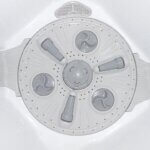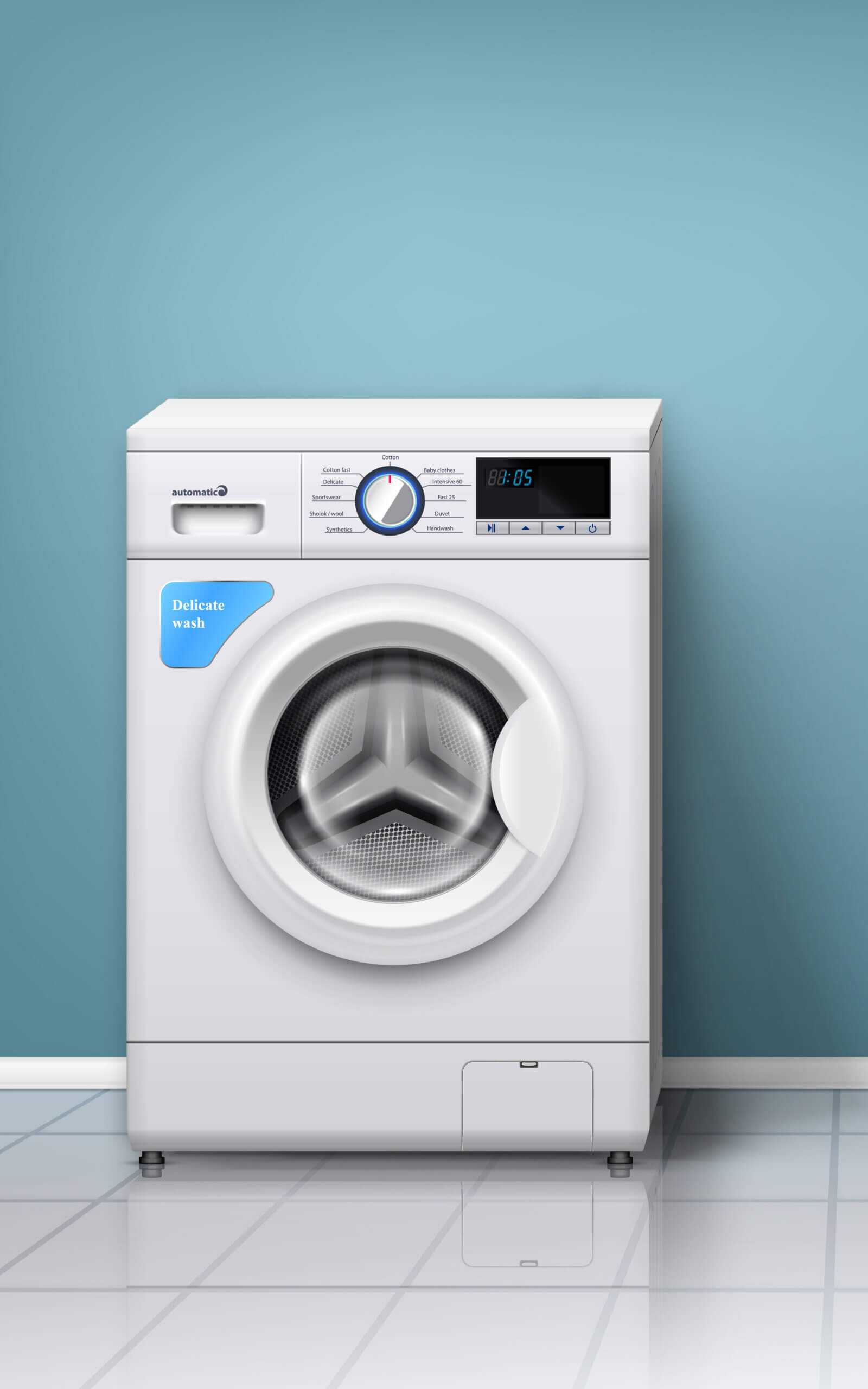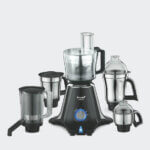Difference Between Direct Cool And Frost Free – A Comprehensive Guide
Synopsis
The primary difference between a direct cool and a frost-free refrigerator lies in the defrosting mechanism: direct cool models require manual defrosting, while frost-free refrigerators feature an automatic defrosting system, eliminating the need for manual intervention and ensuring consistent cooling.
Introduction
Are you looking for the best refrigerator for your family that perfectly meets your needs? You must have observed that there are two kinds of refrigerators you can choose from: direct cool, and frost-free. But what is the difference between direct cool and frost free refrigerators?
The direct cool refrigerator is the simpler version of the two. They use cooling coils, which are located on the back of the fridge, to keep the temperature inside at a nice, cool level.
You’ll find ice accumulating in the freezer and other surfaces on the interior of the direct cool refrigerator. Therefore, direct-cool refrigerators require manual defrosting.
Most single-door refrigerators feature the Direct Cool technology.
A frost-free refrigerator, on the other hand, does not let ice build up in the freezer section; instead, it uses a built-in heater to automatically melt any ice that builds up.
You won’t have to worry about defrosting your fridge—but you’ll have to pay extra upfront for this convenience plus many more features!
All double-door, side-by-side door and multi-door refrigerators feature the Frost-free technology.
- Synopsis
- Introduction
- What is Direct Cool and Frost Free?
- Difference Between Direct Cool and Frost Free Refrigerator
- Frost Free vs Direct Cool – Pros & Cons
- What is Inverter Direct Cool Refrigerator?
- Direct Cool or Frost Free Power Consumption
- Direct Cool vs Inverter
- Direct Cool Refrigerator vs Inverter
- Which is Better: Frost-Free or Direct Cool Refrigerator?
- Which is Better – Frost or No Frost Refrigerator?
- What is Inverter Direct Cool Refrigerator?
- Frequently Asked Questions (FAQs)
What is Direct Cool and Frost Free?

Direct cool and frost-free are two types of cooling systems used in refrigerators.
Simply put, it refers to the cooling technology that the refrigerator works on.
Difference Between Direct Cool and Frost Free Refrigerator
Direct cool refrigerators use a natural convection process to produce the cooling effect. (Courtesy: Wikipedia)
They do not have a built-in fan, and they can only maintain a single temperature.
Food stored in direct cool refrigerators tends to freeze quickly and, at times, unevenly.
Direct cool refrigerators also have to be manually defrosted about once a month.
Direct cooling technology is typically used in single-door refrigerators only.
ALSO READ:
In case you missed it, you can read about the advantages and disadvantages of buying a Single Door Refrigerator along with our recommendations here.
What is the meaning of frost free refrigerator?
Frost-free refrigerators also called No Frost refrigerators use a system of vents, fans, and automatic cycles to keep the temperature constant throughout the refrigerator.
The fans help keep the temperature even when you open the refrigerator door, and they also help prevent ice from building up on any surfaces on the inside of the refrigerator.
They are more efficient than direct cool refrigerators, but they usually cost more than their direct cool counterparts.
All refrigerators other than single-door refrigerators use frost-free cooling technology.
These include the most commonly used double-door refrigerators, as well as the multi-door, French door, and side-by-side refrigerators.
ALSO READ:
In case you missed it, you can read about the advantages and disadvantages of buying a Double Door Refrigerator along with our recommendations here.
Frost Free vs Direct Cool – Pros & Cons
When deciding on a frost-free or direct cool refrigerator, it’s important to know the differences between them.
Frost-free is a relatively newer cooling technology than Direct cool.
Both frost-free and direct cool refrigerators have their pros and cons.
Advantages of Direct Cool Refrigerator
- Lower in price as compared to frost-free refrigerators
- Low maintenance cost
- Consumes less electricity than frost-free refrigerators
- More durable, tough, and rugged
- Very compact and suitable for small families or bachelor
Disadvantages of Direct Cool Refrigerator
- Its storage capacity is less compared to frost-free refrigerators
- At times, the cooling is uneven
- The freezer compartment and interior walls need to be defrosted – usually once a month
Advantages of No Frost Refrigerator
- Efficient at keeping the food items fresh for a long time.
- It prevents ice build-up inside the freezer compartment. You do not have to defrost it, unlike the direct cool refrigerator.
- It has a large storage capacity – ranging from 200 L to 500 L or even more.
- Ideal for big families and those who host parties at home often.
TIP
You must clean it regularly so that bacteria doesn’t grow on its surface – both inside & outside.
Disadvantages of No Frost Refrigerator
- Usually costlier than a direct cool refrigerator.
- Consumes a bit more electricity than a direct cool refrigerator. However, the gap in energy consumption is narrowing.
- Available in bigger sizes – 200 L and above. May not be suitable for a small family.
What is Inverter Direct Cool Refrigerator?
To understand what an inverter direct cool refrigerator is, you’ll have to understand two distinct concepts:
- Inverter Refrigerator, and
- Direct Cool Refrigerator
When a refrigerator is addressed as an “inverter” refrigerator, it means that it runs on an inverter compressor.
In fact, a refrigerator either runs on a traditional “normal” compressor or a more advanced “inverter compressor”.
On the other hand, direct cool refers to the cooling technology of the refrigerator.
Inverter direct cool refrigerator is one that is powered by an inverter compressor and functions on direct cool technology.
As only single-door refrigerators come with the direct cool cooling technology, you’ll find the combination of direct cool and inverter compressor in a single-door refrigerator only.
ALSO READ:
You can read about the difference between an inverter compressor and a normal compressor in the refrigerator along with our recommendations here.
Direct Cool or Frost Free Power Consumption
Which refrigerator consumes more power – Direct cool or frost free?
This is a common question that most people ask before they buy a refrigerator.
In general, it’s said that a frost-free refrigerator consumes more power than a direct cool refrigerator.
But actually, the electricity consumption of a refrigerator depends not only on the fact whether it runs on direct cool or frost-free cooling technology but also on some other factors like:
- size of the refrigerator
- star rating of the refrigerator
- type of compressor
- features & functionality like if it’s a convertible or a non-convertible refrigerator
- the brand
- the model and so on…
So the opinion as to whether a direct cool or a frost-free refrigerator consumes more power can’t be generalized.
But you’ll get a fair idea by knowing that a 3 star rated frost-free refrigerator of 253 L capacity consumes about 193 Kilowatts Hours annually.
In comparison, a 5 star rated direct cool refrigerator of 189 L capacity consumes about 104 Kilowatts Hours annually.
| Cooling Technology | Frost-free | Direct Cool |
|---|---|---|
| Annual Power Consumption (KWH) | 193 | 104 |
| Energy Star Rating | 3 Star | 5 Star |
| Size (in liters) | 253 L | 189 L |
| Compressor Type | Inverter | Inverter |
| Style | Double Door Refrigerator | Single Door Refrigerator |
| Read complete Review | Read Review | Read Review |
| Best Price | View Price on Amazon | View Price on Amazon |
Both these models are from Samsung – the renowned brand in the Indian market.
However, you must’ve observed above that the star rating and size of both models differ – hence the obvious difference in the power consumption.
And, of course, you get more features in a frost-free or double-door refrigerator than in a direct cool or single-door refrigerator. So a little more power consumption is justified by looking at the long-term benefits that you’ll enjoy.
ALSO READ:
What is Star Rating in Refrigerator? Read here to know everything.
What is the difference between a Convertible and a Non-Convertible Refrigerator? Read here to understand.
Direct Cool vs Inverter
Direct Cool refers to the cooling technology of the refrigerator whereas Inverter refers to its compressor technology.
A refrigerator can be direct cool as well as inverter at the same time. The cooling technology and the compressor technology aren’t comparable – being two different aspects of the refrigerator.
Direct Cool Refrigerator vs Inverter
While researching for the best refrigerator, you may want to look for direct cool refrigerator vs inverter.
But these two – direct cool refrigerator and inverter – are two different concepts altogether.
It isn’t fair to compare them. Comparing them is like comparing apples to oranges.
In fact, both these technologies work together for a refrigerator to function.
Which is Better: Frost-Free or Direct Cool Refrigerator?
When it comes to choosing between a frost-free and a direct cool refrigerator, there is no one-size-fits-all answer. Both types have their own merits and drawbacks, and the decision ultimately depends on your specific needs, preferences, and priorities.
Let’s take a closer look at the factors to consider when determining which type of refrigerator is better suited for your home.
Cooling Performance and Efficiency:
Frost-Free Refrigerators:
These appliances excel in providing consistent and even cooling throughout the compartments.
The automatic defrosting feature prevents ice buildup, ensuring that the cooling elements work efficiently.
However, the constant operation of the defrosting system can lead to slightly higher energy consumption compared to direct cool refrigerators.
Direct Cool Refrigerators:
While these models may not offer the same level of uniform cooling as frost-free refrigerators, they are known for their energy efficiency.
The absence of a complex defrosting mechanism results in lower electricity consumption, making them a cost-effective option in the long run.
Convenience and Maintenance:
Frost-Free Refrigerators:
The hands-off approach to defrosting is a major convenience factor. You won’t have to worry about setting aside time for manual defrosting, which can be a time-consuming and messy task.
This convenience, however, comes with a trade-off – slightly higher energy consumption and potentially a higher initial cost.
Direct Cool Refrigerators:
Manual defrosting is required occasionally, which involves emptying the compartments and allowing the ice to melt.
While this can be seen as a hassle, it’s important to note that the frequency of defrosting depends on factors like ambient humidity and usage patterns.
Some users may not mind this task, especially considering the energy savings and simplicity of the appliance.
Additional Features and Modernity:
Frost-Free Refrigerators:
These models often come equipped with a range of advanced features such as digital temperature controls, adjustable shelving, and even smart technology integration.
If you value modern convenience and cutting-edge technology, a frost-free refrigerator might align better with your preferences.
Direct Cool Refrigerators:
While they may lack some of the high-tech features found in frost-free models, direct-cool refrigerators offer a simple and straightforward approach to cooling.
If you prefer a more traditional and uncomplicated appliance, a direct cool refrigerator might be the better choice.
Budget Considerations:
Frost-Free Refrigerators:
The advanced cooling technology and additional features of frost-free refrigerators usually come with a higher price tag.
While you might initially invest more, the convenience and benefits they offer can justify the cost for many households.
Direct Cool Refrigerators:
These appliances are generally more budget-friendly in terms of both initial cost and long-term energy savings.
If affordability is a top priority, a direct cool refrigerator could be the more suitable option.
In Conclusion: Your Perfect Fit
Choosing between a frost-free and a direct cool refrigerator involves weighing the advantages and disadvantages of each type against your unique needs and preferences.
If you prioritize convenience, even cooling, and modern features, a frost-free refrigerator might be the better fit.
On the other hand, if energy efficiency, simplicity, and budget considerations are more important to you, a direct cool refrigerator could be the ideal choice.
Remember to consider factors like your kitchen space, usage patterns, budget, and willingness to perform occasional maintenance tasks.
By carefully evaluating these aspects, you can make an informed decision that ensures your refrigerator perfectly aligns with your lifestyle and keeps your food fresh and cool for years to come.
Which is Better – Frost or No Frost Refrigerator?
A No Frost Refrigerator is better because it effectively preserves the freshness of food items for a prolonged time.
Additionally, it stops ice from accumulating inside the freezer compartment. As such, unlike the direct-cool refrigerator, you do not need to defrost it.
It also has a big storage capacity, between 200 L and 500 L or even more.
WHAT’S YOUR CHOICE?
View on AMAZON
HUNTING FOR YOUR DREAM REFRIGERATOR?
LET’S HELP YOU!
ALSO READ:
What is the difference between Single Door and Double Door Refrigerator? Read here to know everything.
What is Inverter Direct Cool Refrigerator?
Inverter Direct Cool Refrigerators: A Revolution in Cooling Efficiency
In recent years, the appliance industry has witnessed a significant advancement in refrigerator technology with the introduction of inverter direct cool refrigerators. This innovative design combines the efficiency of direct cool refrigerators with the energy-saving benefits of inverter technology, creating a powerful and eco-friendly cooling solution.
1. Understanding Inverter Technology:
Inverter technology, commonly used in air conditioners and now integrated into refrigerators, operates on a variable-speed compressor. Unlike traditional compressors that work at fixed speeds, inverter compressors adjust their speed based on the cooling requirements. This dynamic modulation ensures that the compressor runs at lower speeds during periods of steady cooling demand, leading to substantial energy savings compared to conventional models.
2. How Inverter Direct Cool Refrigerators Work:
In an inverter direct cool refrigerator, the inverter technology is applied to the direct cool cooling system. Direct cool refrigerators cool the compartments by natural convection, circulating cool air due to the temperature difference between the evaporator plate and the warmer interior. Inverter technology enhances this process by optimizing the compressor’s speed, resulting in more precise and efficient cooling.
3. Benefits of Inverter Direct Cool Refrigerators:
- Energy Efficiency: One of the primary advantages of inverter direct cool refrigerators is their energy efficiency. The variable-speed compressor adjusts its power consumption according to the cooling needs, reducing energy consumption during periods of lower demand.
- Consistent Cooling: Inverter technology ensures a more stable and consistent temperature inside the refrigerator, preserving the freshness of food for longer periods. The ability to maintain optimal cooling levels regardless of external factors contributes to better food storage.
- Reduced Noise Levels: In comparison to traditional refrigerators with fixed-speed compressors that can be noisy during operation, inverter direct cool refrigerators tend to operate more quietly. The variable-speed compressor adjusts its speed to the cooling requirements, resulting in a quieter and more efficient cooling process.
- Longer Appliance Lifespan: The ability of the inverter compressor to operate at varying speeds reduces wear and tear on the appliance. This can potentially extend the lifespan of the refrigerator, providing a more durable and reliable cooling solution.
4. Considerations When Choosing an Inverter Direct Cool Refrigerator:
- Initial Cost: While inverter direct cool refrigerators offer long-term energy savings, they may have a higher initial cost compared to non-inverter models. Consider this investment in terms of the potential energy bill savings over the appliance’s lifespan.
- Brand and Model: The performance of inverter direct cool refrigerators can vary between brands and models. Research and compare different options to find a refrigerator that best meets your specific needs and preferences.
In summary, inverter direct cool refrigerators represent a significant leap in cooling technology, combining the efficiency of direct cool systems with the energy-saving benefits of inverter compressors.
This innovative approach not only enhances energy efficiency and consistent cooling but also contributes to quieter operation and potentially extends the appliance’s lifespan.
Frequently Asked Questions (FAQs)
1. Direct cool vs frost free – which is better?
Wondering frost-free or direct cool-which is best?
Frost-free is a relatively new, advanced, and better technology.
A single-door refrigerator normally comes with direct cool technology only.
However, double-door and multi-door refrigerators run on frost-free cooling technology.
2. How to defrost direct cool refrigerator?
To defrost direct cool refrigerator simply press the defrost button. It usually takes some time for the ice to melt from the freezer and other surfaces on the inside of the refrigerator.
3. How does frost free refrigerator work?
Wondering how do no frost freezers work?
Frost-free refrigerators use a combination of heat and air circulation to remove frost and ice buildup in refrigerators.
Frost-free refrigerators eliminate the need for manual defrosting by using a small heating element in combination with a fan to circulate air around the unit. The heating element turns on automatically when ice or frost starts to build up in the refrigerator, which is typically every three weeks or so.
The heating element helps melt the ice, which is then removed by a fan that circulates air through the refrigerator and freezer compartments, removing any moisture along the way.
4. Are all refrigerators frost free?
No, all refrigerators are not frost-free. There are direct cool refrigerators also available on the market.
You’ll find direct cooling technology in most single-door refrigerators. Double and multiple-door refrigerators usually come as frost-free refrigerators.
5. Are frost free fridge freezers any good?
Yes, frost-free fridge freezers are really good. All double-door and multi-door refrigerators these days come with frost-free cooling technology only.
6. Are frost free fridge freezers noisy?
Not really. Most modern frost-free fridge freezers aren’t noisy.
Technological advancements have made frost-free fridges work almost silently.
7. How long do frost free fridge freezers last?
If handled properly, most frost-free fridge freezers can last up to 15 years and beyond.
RESOURCES FOR YOUR HELP
Advantages and Disadvantages of Double Door Refrigerator
Advantages and Disadvantages of Single Door Refrigerator
Difference Between Convertible and Non-Convertible Refrigerator
Difference Between Inverter Compressor and Normal Compressor in Refrigerator
Difference Between Direct Cool And Frost Free Refrigerator
About Author
You can ‘meet your author’ on the About Author page here.
TRENDING NOW
- Where is the Freezer in Side by Side Refrigerator?
- Best Convertible Side By Side Refrigerator
- Best Side By Side Refrigerator Under 60000
- Midea Side By Side Refrigerator Review
- Difference Between 4 Star and 5 Star Refrigerator
- Difference Between Direct Cool And Frost Free
- What is Star Rating in Refrigerator? Know Everything!
- What is the difference between Single Door and Double Door Refrigerator?
- Advantages and Disadvantages of Double Door Refrigerator
- Advantages and Disadvantages of Single Door Refrigerator
YOU MAY ALSO LIKE TO READ
- How to Clean a Top Loader Washing Machine?
- How to Clean an LG Front Loading Washing Machine?
- What is Front Load Washing Machine?
- What is Anti-Tangle in Bosch Washing Machine?
- Do Impeller Washers Tangle Clothes?
- What Is Pulsator in Washing Machine?
- What is Cradle Wash in IFB Washing Machine?
- How To Load a Front Load Washing Machine?
- Best Semi Automatic Washing Machine in India
- Best Front Load Washing Machine in India 2023
- Best Impeller Top Load Washer in India 2023
- How Much Water does Front Load Washing Machine Use?
- How to use Front Load Washing Machine? India 2023
- Front Load Washing Machine Buying Guide – India – 2023
- Which Washing Machine is better – Semi or Fully Automatic in 2024?
- How to Select Washing Machine Capacity in 2023?
- Pros and Cons of Top Load and Front Load Washing Machines India 2023
- Difference between Top Load and Front Load – India (2023)?
- Morphy Richards DLX 1000 Review
- Blender vs Mixer Grinder
- Crompton Mixer Grinder 750w Review
- How To Use Preethi Zodiac Mixer Grinder?
- Mixer Grinder Wattage for Home Use & Buying Guide- India 2023
- Best Noiseless Mixer Grinders in India – 2023





































Leave a Reply